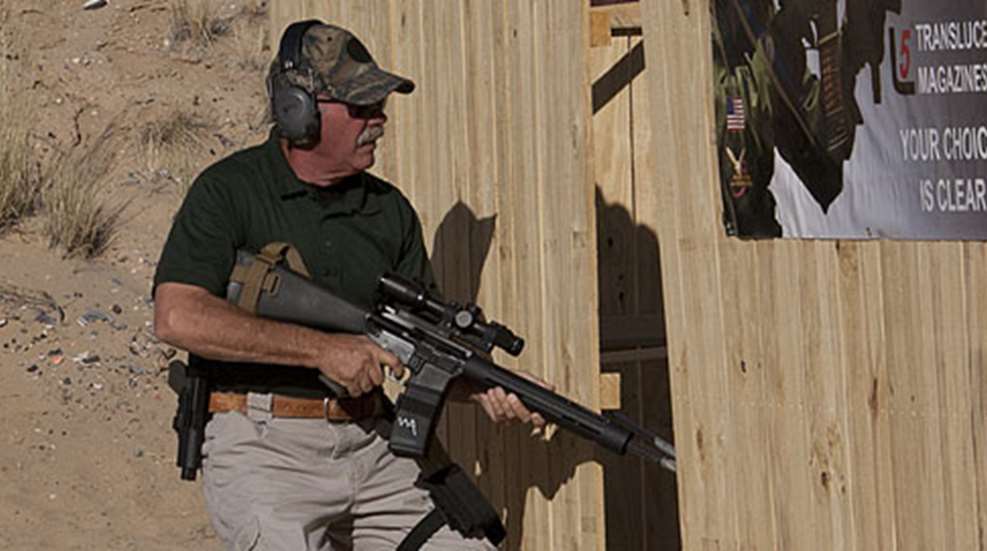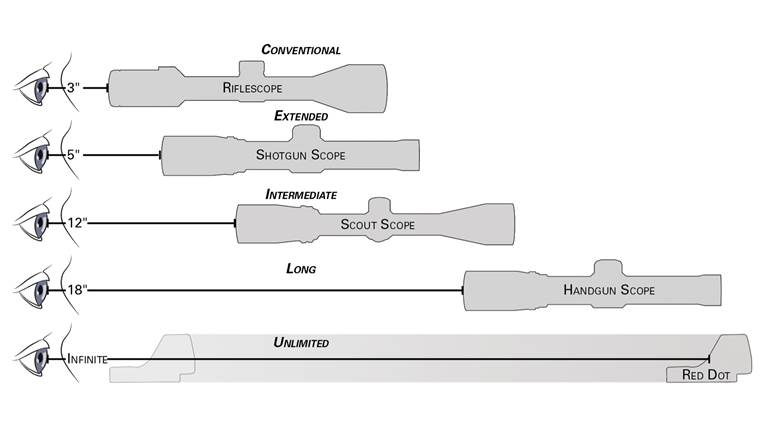
Over the last couple of decades, the development of rifle optics has crossed over not from the military to the civilian environment, but rather the other way around. Think that’s a pretty bold statement? Consider the almost universal adoption of 4x glass by the various branches of the armed forces, the use of multiple optics on one weapon and the move away from iron sights. Most of this has been driven by civilian competition, where the lessons learned have been adopted by organizations such as the Army Marksmanship Unit (AMU).
The sport of 3-gun consists of hitting torso-sized and smaller targets at various unknown ranges from compromised shooting positions and under time pressure. If this sounds like the very definition of “practical” marksmanship, then it should come as no surprise to see cross-fertilization between the competitive arena and the sandbox.
Three-gun has seen considerable growth in the past few years, and like most areas of human endeavor experiencing growth spurts, the rules have evolved to accommodate the wishes of the most vociferous participants. This means there are many options open to the new shooter when it comes to outfitting his or her rifle with optics. Besides the firearms themselves, optics have the most effect on the shooter’s effectiveness.
Iron Sights
Last year, a rule change went into effect that allowed 1x (unmagnified) optics in United States Practical Shooting Association (USPSA), whereas previously these had a tough time finding a home. This had the effect of making the division more popular and reducing iron sights to buggy whip status, as having the reticle and target in the same focal plane is too big of an advantage for most shooters to pass up. However, if you’re a dedicated iron-sight shooter, there are still plenty of outlaw matches with a separate iron sight category. If you’re still determined to line up rear sight, front sight and target, because “darn it, it was good enough for grandpa,” then take grandpa’s advice and make sure the first two parts of that trifecta are as far apart as possible. The stock irons on a 16-inch barreled AR15 does not produce a sight radius of 16 inches, which, coupled with that fat front post make it tough to connect at speed with anything other than the closest targets. A 20-inch barreled gun is an improvement; moving the front sight out to the muzzle is better yet. KNS also makes a selection of smaller front sights that cover less target area, which leads to less guesswork on the part of the shooter.
Limited Division
The current hot ticket in the Limited division is a red-dot sight, preferably with a small reticle and manual brightness control. The Eotech and Aimpoint offerings are currently the most popular, each with their own set of devotees. Red dots are exceptionally fast when used on close-in targets, but as the distance grows, the lack of magnification makes distinguishing steel from brush more difficult. If you have good eyesight, you have an advantage. If you’re like the rest of us mere mortals, a little magnification will do wonders for your ability to hit at longer ranges.
Scoped Tactical
The most popular division has, as you might expect, the greatest number of optics choices. The one you’ll see most often is a low-powered variable scope, typically 1-4x. Dial it to low power for up-close shots and increase the magnification to aid in identifying long-range steel. The good news is that affordable choices are available. The midrange is also well-served and if you want to spend the equivalent of a decent used car on your glass, there are at least three companies waiting to assist.
When shopping for a low-power variable, look for a wide field of view at the lowest power setting (100 feet at 100 yards is the magic combo), as this will make shooting with both eyes open much easier. If possible, check to see how critical the relationship is between your head and the eyepiece. This feature (the eyebox) will determine how easy it is to take shots from difficult positions when you have a less-than-perfect cheek weld. Illuminated reticles are nice to have, but not essential, as is a heavy outer component to the crosshairs.
At the bargain end of the spectrum, the Weaver V Series 1-3x20 is a great choice and can usually be had for less than $170. It’s also the lightest scope of its type, which may be important if you’re trying to keep the weight of your rig down. Sliding the scale a hundred bucks to the right, Nikon’s M-223 offers decent optical clarity, a large eyebox and it shares the field with the slightly better-spec Burris TAC 30. If we set ourselves a street price limit of $900, then Vortex, Leupold, IOR Valdada and Trijicon add some excellent offerings to the mix. North of a grand lie scopes from Nightforce, Schmidt & Bender, Zeiss, Premier Reticles and Swarovski; at the head of the pack is the Leupold Mark 8 at a breath-taking $4,000.
Open Division
Despite the versatility offered by variable scopes, nothing beats the transition speed of multiple optics—think of it as the visual equivalent of the New York Reload. For this reason, you’ll see competitors in Open division using a medium-power magnified optic mounted atop the receiver, with a small red-dot sight offset to the strong side, preferably at the same height as the primary optic. To use the secondary sight, simply roll the rifle into the shoulder while keeping the head stationary and engage targets with both eyes open. My personal preference is to mount the dot as far back as possible as it’s quicker to acquire, but doing so sacrifices a little peripheral vision.
The Trijicon ACOG, in all its variants, is a popular choice in Open. I have a TA01 with the JP Rifles reticle and it offers a great balance of optical clarity and low weight, which makes up for its only drawback of 4x magnification. For shots on steel at 500 yards or more, this can be a limiting factor, but like everything else in life, there’s tradeoff, compromise and the willingness to live with negatives to consider. A number of shooters who wish to compete in more than one division simply add a dot to their scoped tactical rifle, turning it into an open gun.
The Leupold Deltapoint, Trijicon RMR, Aimpoint Micro and C-More STS are the current favorites among the crop of “Gen III” red dots. Look for an optic with a bright, crisp dot that will be easily visible in the noonday sun, long battery life and low distortion when looking through the lens. In this case, the mount is often as important as the sight. There are a number of them out there, but in my experience the best of the bunch is from Predator Tactical, as it offers great versatility, robust protection for the optic and sits directly over the bore axis.
As with most firearms-related equipment, the rule of “buy once, cry once” applies to scopes. It’s far better to save for a decent piece of kit than to buy something inferior with the intention of trading up after a few months, and with the products listed above, you shouldn’t have any fears about being limited by your equipment.





































